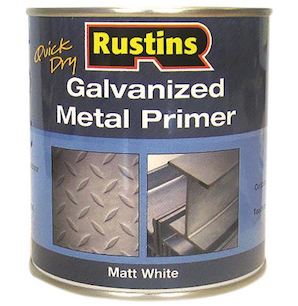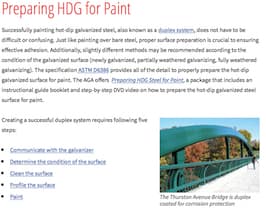
Painting inside of galvanized stock tanks (underwater use)
Use as swimming pool?
-----
Q. We have a galvanized stock tank for a pool and we failed miserably the first time ... the paint and primer bubbled and we had to unfortunately strip the pool back down to metal...primer and paint...took us forever...
we washed as stated on this page, let dry for a few days which isn't hard in AZ ... purchased a primer made for galvanized steel and pool paint ... this didn't last very long before the primer failed and bubbled, making the paint do the same, but this time the primer was coming through the paint and looked like pieces of foaming white little bitty cloudy into the water... this paint and primer was easy to peel off as long as it was under water...not so easy where it wasn't submerged...so we're still trying to figure out what we can do to paint the inside of our pool...frustrated twice ..stripping this pool hasn't been an easy task ...
- Tucson Arizona
September 7, 2023
⇩ Related postings, oldest first ⇩
Q. I am thinking of using a large galvanized stock tank as a small, above/in ground swimming pool. I would like to paint the inside of the tank with pool paint to increase it's water retention and to improve it's appearance. I am not sure what type of primer I should use that would be compatible with an underwater+galvanized metal surface application.
Any info would be appreciated.
- Sacramento, California
2001
|
Q. I came across your question as I was researching the feasibility of using a stock tank as a swimming pool. I am not able to answer your question, but if you are willing to share your experience using the stock tank as a swimming pool, I would love to hear it. Andy ForstiePersonal - Phoenix, Arizona 2004 Q. As I've noticed in postings by others who have visited this website, I'm trying to use a large galvanized stock tank as a small, above/in ground swimming pool. I would like to paint the inside of the tank with white pool paint to increase it's water retention, and to improve it's appearance. However, I'm not sure what type of primer I should use that would be compatible with an underwater+galvanized metal surface application. Any info would be appreciated. Jim Whisenanthome owner - Oklahoma City, Oklahoma 2004 |
A. Hi folks. Galvanizing can be very difficult to paint for several reasons, but one of the problems is that zinc (galvanizing) plus alkyd (oil paint) "saponifies" (turns into soap). Obviously this soapy layer at the interface of the galvanizing and the paint makes for an impossible situation, and you may have seen paint slide right off of galvanizing because of it. You must use a latex self-etching primer after scrubbing the surface down and rinsing it, but preferably after letting the galvanizing age for a year.
This is still not an absolute guarantee of success (in industry, zinc which is going to be painted is first zinc phosphatized), but at least you'll have fair odds with the latex self-etching primer :-)
Regards,

Ted Mooney, P.E.
Striving to live Aloha
finishing.com - Pine Beach, New Jersey
Ted is available for instant help
or longer-term assistance.
Q. I purchased a brand new stock tank for use as a backyard pool in 2001. We used it without any paint or sealer for 3 years, and it worked nicely. I purchased a pond filter and treated it with chemicals. During the off season, we drained it and flipped it. It started to get some white rust, making parts of the bottom rough, so last year I decided to paint it. I primed it with galvanized metal primer and then painted it with two coats of blue pool paint. It stayed on for most of the season, but started to chip by the end July. This year it is even worse. My hardware man says that it is the zinc in the tank that will always repel the paint. He suggests that this time I prime it with boiled linseed oil ⇦ on eBay or Amazon [affil link] which will make it extremely sticky, then use the pool paint over that.
Cynthia D. Alexander- Friona, Texas
2005
A. Hi Cynthia. I am not familiar with that, so I can't call your hardware man wrong. But the American Galvanizers Association has a nice webpage explaining the situation and the suggested approaches ==>
Luck & Regards,

Ted Mooney, P.E.
Striving to live Aloha
finishing.com - Pine Beach, New Jersey
Ted is available for instant help
or longer-term assistance.
|
|
A. Poly stock tanks are available now. They would not need to be painted for water retention, but I don't know how you feel about the aesthetics. The ones I have seen are a light green in color. Amy Camp- Mitchell, Nebraska June 25, 2008 |
Q. My husband is a welder, so we know the dangers of zinc toxicity from galvanized metals. My question is, with the trend of using galvanized stock tanks as pools, in the hot summer, is there cause for concern with this? I know it's not heated to the same extent. I just wonder if this is considered safe?
Brooke DavenportConcerned Wife - North Salt Lake
June 22, 2021
A. Hi Brooke.
Zinc boils at 1665 °F and is emitted as clouds of vapor in the air at higher temperatures than that.
Zinc is not a poison or a toxin; rather it's an important micronutrient. Cold-easing tablets for example are zinc and are deliberately ingested. But if your husband were to weld zinc-coated things with poor ventilation or an improper welding hood he could inhale those clouds of zinc vapor and get sick due to the huge overdose. The hottest of hot summer days can't get the tank to anything remotely approaching that temperature; your house and yard would burst into flames long before you were halfway there :-)
Luck & Regards,

Ted Mooney, P.E. RET
Striving to live Aloha
finishing.com - Pine Beach, New Jersey
Ted is available for instant help
or longer-term assistance.
Q. I am painting a stock tank with an epoxy paint. What self etching primer is good for underwater use?
Lonnie Colr- Alvin Texas
May 9, 2022
A. Hi Lonnie.
When it is known that a galvanized surface will be painted, it is always zinc phosphatized or annealed in a factory ... and that is the "correct" approach to the problem, as universally practiced on automobiles and other mass produced items.
Paint, even specialty primers, sometimes sticks poorly to galvanized surfaces -- which can have varying degrees of weathering, variable degrees of chromate quenching, and a tendency to saponify (turn to soap if exposed to alkali), etc. All you can do is your best and keep your fingers crossed; often it works fine.
I think a scrub brush
⇦ on
eBay or
Amazon [affil link] and powdered pumice
⇦ on
eBay or
Amazon [affil link] for cleaning, followed by a 1:1 vinegar/water neutralizing/etch, followed by rinsing, followed by a latex primer designed for painting on galvanizing are your best bet; I am not personally familiar with any specialty primers designed for under-water use on non-phosphatized galvanizing, so priming as described followed by your epoxy paint may be best for indoor use. But epoxy has no UV-resistance, so if this is for use outside you may want to put a top coat over the epoxy or go with a polyester or type of paint instead.
Luck & Regards,

Ted Mooney, P.E. RET
Striving to live Aloha
finishing.com - Pine Beach, New Jersey
Ted is available for instant help
or longer-term assistance.
May 2022
Q. We made a stock tank hot tub using PVC pump to a hydro boiler wood stove.
I have not found any other place where the temperature of the water is mentioned in regard to release of zinc, lead, etc..
So, I'm assuming we can safely soak in ~ 100 water, without zinc or lead toxicity.
Thanks for your info.
- South Haven, Michigan
July 24, 2023
A. Hi Franny. Millions upon millions of infants, and older people as well, bathed in galvanized washtubs. Further, if this tank was intended for feeding or watering livestock, it's reasonably safe to assume that it won't leach substantial amounts of toxic materials. And as Paracelsus told us 500 years ago, the dose makes the poison.
Still, as an engineer, I must repeat the mantra that the designer intended this tank to be used for a different purpose and when we repurpose something we do not know for sure that the choices he or she made are compatible with the new application. Livestock feed tanks are probably sufficiently resistant to low concentrations of chlorine, bromine, and other water treatment chemicals used in hot tubs to not pose any danger beyond the Paracelsus point, but the designer did not have those chemicals in mind.
Luck & Regards,

Ted Mooney, P.E. RET
Striving to live Aloha
finishing.com - Pine Beach, New Jersey
Ted is available for instant help
or longer-term assistance.
Q, A, or Comment on THIS thread -or- Start a NEW Thread

